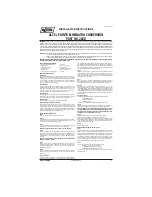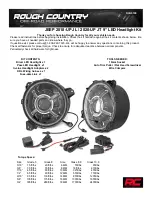
Occupant safety
Introduction to the restraint system
The restraint system can reduce the risk of vehi-
cle occupants coming into contact with parts of
the vehicle's interior in the event of an accident.
The restraint system can also reduce the forces
to which vehicle occupants are subjected during
an accident.
The restraint system includes the:
R
seat belt system
R
airbags
R
child restraint system
R
child seat securing system
The components of the restraint system work in
conjunction with each other. They can only offer
protection if all vehicle occupants always:
R
have the seat belt correctly fastened
(
Y
page 33)
R
have the seat and head restraint adjusted
properly (
Y
page 67)
As the driver, you must also make sure that the
steering wheel is also adjusted properly.
Observe the information on the correct driver's
seat position (
Y
page 67).
In addition, you must make sure that the airbags
can inflate properly if they are deployed
(
Y
page 36).
An airbag supplements a correctly worn seat
belt. As an additional safety device, the airbag
increases the level of protection for vehicle
occupants in the event of an accident. The air-
bags are not deployed, for example, in the event
of an accident in which sufficient protection is
offered by the seat belt. In addition, only those
airbags, which in the applicable accident situa-
tions offer additional protection, are deployed in
the event of an accident. However, the seat belt
and airbag generally do not protect against
objects penetrating the vehicle from the out-
side.
Information on how the restraint system oper-
ates can be found under "Deployment of belt
tensioners and airbags" (
Y
page 37).
See "Children in the vehicle" for information on
children travelling with you in the vehicle as well
as on child restraint systems (
Y
page 38).
Important safety notes
G
WARNING
If the restraint system is modified, it may no
longer work as intended. The restraint system
may then not perform its intended protective
function by failing in an accident or triggering
unexpectedly, for example. There is an
increased risk of injury, possibly even fatal.
Never modify parts of the restraint system. Do
not attempt to modify the wiring as well as
electronic components or their software.
If it is necessary to adjust the vehicle to accom-
modate a person with disabilities, contact a
qualified specialist workshop. Mercedes-Benz
recommends that you use a Mercedes-Benz
Service Centre for this.
Restraint system warning lamp
The functions of the restraint system are
checked after the ignition is switched on and at
regular intervals while the engine is running.
Therefore, malfunctions can be detected in
good time.
The
6
restraint system warning lamp on the
instrument cluster lights up when the ignition is
switched on. It goes out no later than a few sec-
onds after the vehicle is started. The compo-
nents of the restraint system are in operational
readiness.
A malfunction has occurred if the
6
restraint
system warning lamp:
R
does not light up after the ignition is switched
on
R
does not go out after a few seconds with the
engine running
R
lights up again while the engine is running
G
WARNING
If the restraint system is malfunctioning,
restraint system components may be trig-
gered unintentionally or may not deploy as
intended during an accident. This may affect
the seat belt tensioner or airbag, for example.
This poses an increased risk of injury or even
fatal injury.
Occupant safety
31
Safet
y
Z
















































